Shop
A bevor is an element of a helmet or a separate element of head protection in the form of half-collar, which typically covers the chest (and sometimes shoulders) and encloses the throat, chin, and often ends at the upper lip. Bevors were developed for and usually used with helmets such as Salad or Chapelle (and
The barbute was a common Italian infantry helmet of the XV century. A barbute was always visorless, but its “face” came in three basic forms: open, T-shaped, or Y-shaped. Its major innovation was its extension of the “cheeks” towards the middle of the face, which provided more protection while maintaining excellent visibility and breathing capability.
Our Maximilian Breastplate is forged into a shallow globose form with three sprays of fluting radiating from the waist. There are seven fluting lines in the center spray and 5 in each of the side sprays. The outermost fluting on each of the side sprays is a single sided fluting, more akin to a step.
Armets first appeared in the XV century and saw widespread use across Europe in countries such as Italy, Spain, France, and England. It is a fully enclosing helmet and has multiple articulation points in the visor, allowing for different levels of “openness”. Also of note is the tapering of the form at the neck, which
There are not many historical sources telling us a story about the helmets of the X – XI centuries. However, one of the most famous is the XI century Bayeux Tapestry (Tapisserie de Bayeux). On different sections of the tapestry, we can see warriors wearing conical helmets with nasal elements. Most of the helms illustrated
The sugarloaf helm is a stylization of the late XIV century top helm. The skull has a conical shape with the peak moved back which lends the helm its name due to its resemblance to the form of conical refined white sugar, the sugar loaf. The visor is equipped with the breathing holes and the
The main element of any set of armor is a helmet. In any role-playing game or reenactment, you need a reliable helmet to protect the most valuable part of your body. Helmets are designed to be as durable as possible and to stand up to any weapon or blow without losing their shape. Our Great
By the end of the XIII century, the apex of the tophelm evolved to a conical shape. At the beginning it was worn over a mail coif and small padded cap. By the end of the XIII century, knights wore a low chalice-shaped bascinet (often equipped with its own mail) under it. It is also interesting
Beginning in about the XIII century, knights’ equipment started to include metal gauntlets. Metal gauntlets were expensive to manufacture because they required great skill on the part of the armory smith. In addition, steel was still an expensive material and as a result, only kings and wealthy knights could afford metal gloves. The poorer warriors
Our Fencing Gauntlets are of the well-known “Hourglass” style adapted for medieval fencing. Made of cold-rolled steel, the finger plates have a thickness of 1.5mm (knuckles and metacarpals) and 1.0mm (all other areas). The special shape of the metacarpal plate provides full articulation and inner leather gloves are included for increase comfort and grip. The
Splinted Greaves in a XIV – late XV century design. These leather greaves are reinforced with metal bars which provide great protection and flexibility. We use an anatomically shaped wooden block when crafting the leather greaves to make them anatomically correct. That’s why our splinted greaves fit perfectly. The steel parts are made of 1.5mm

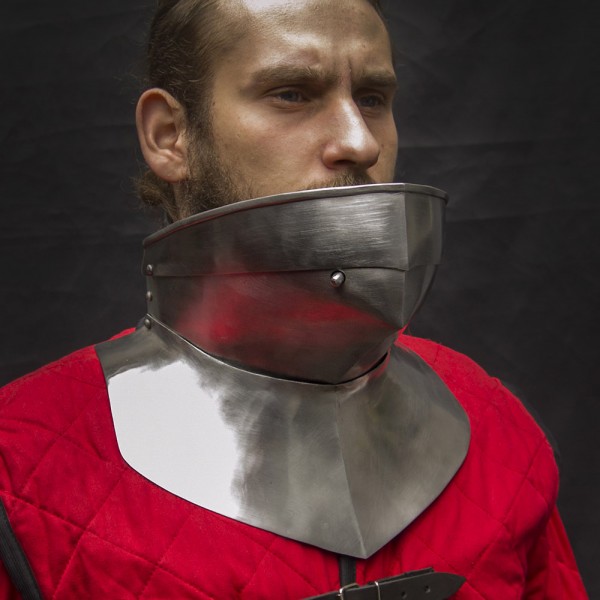
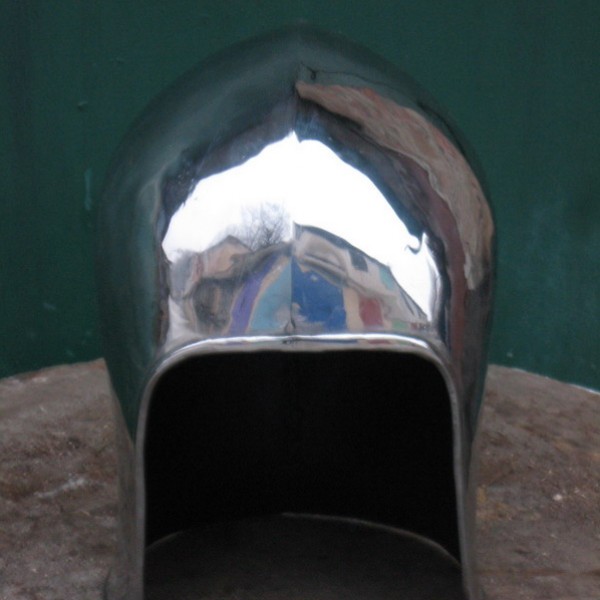
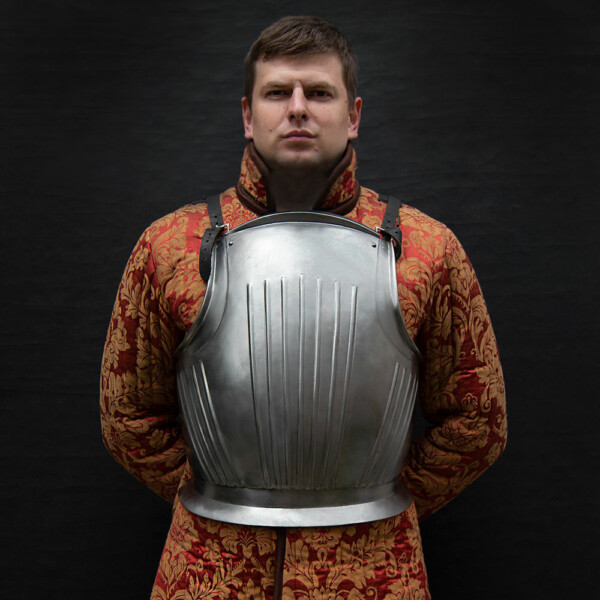
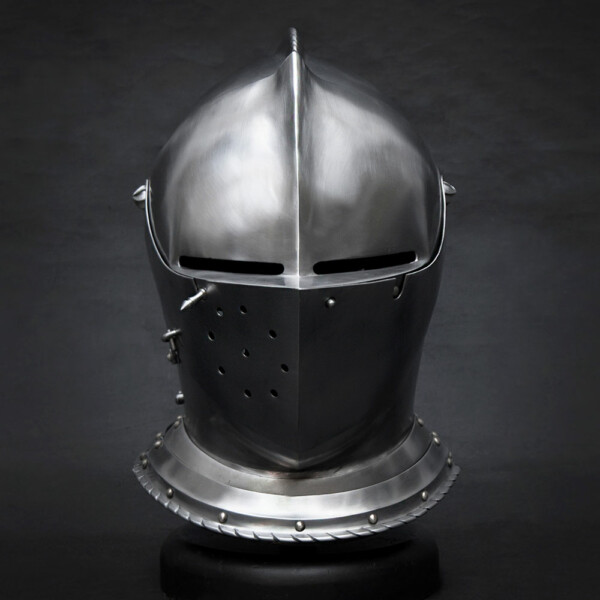

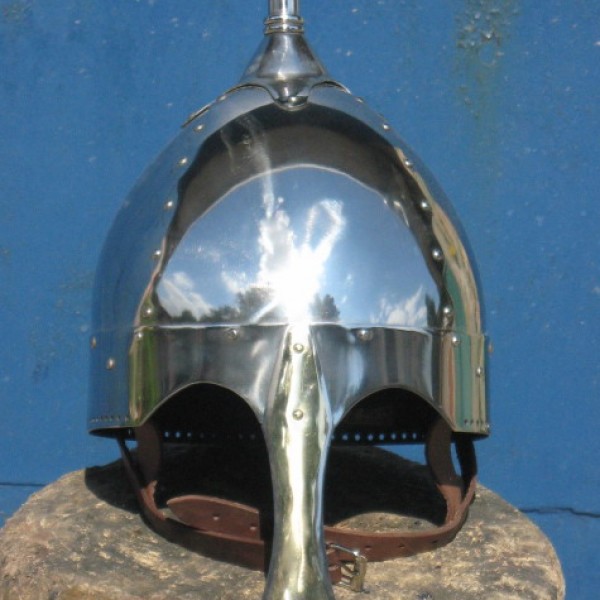
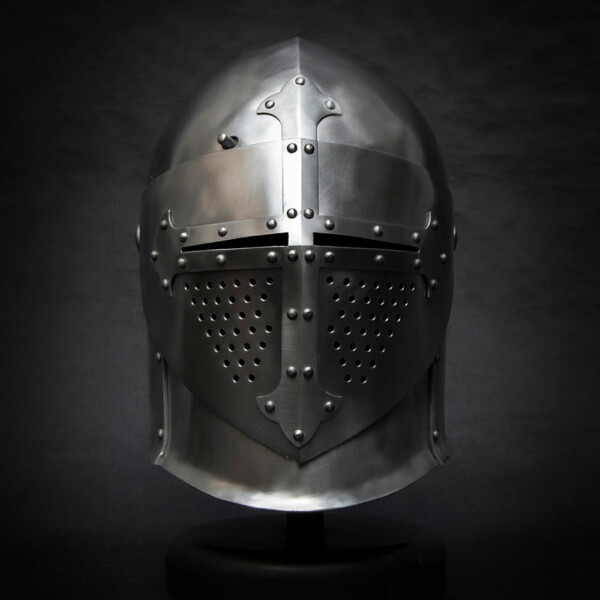
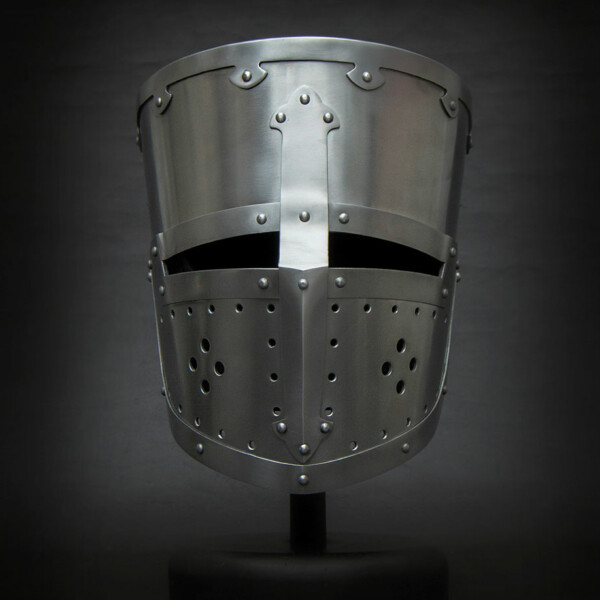


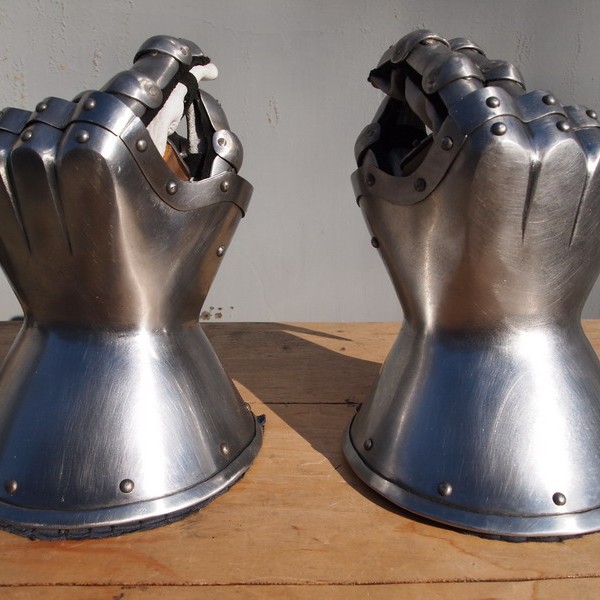
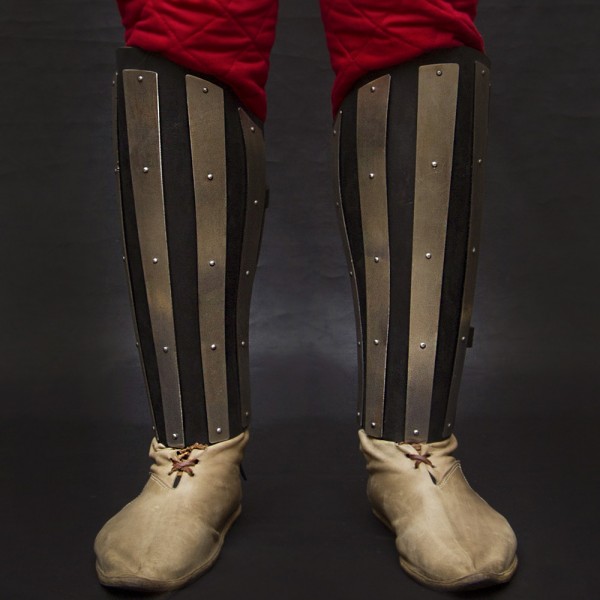
 Shop
Shop